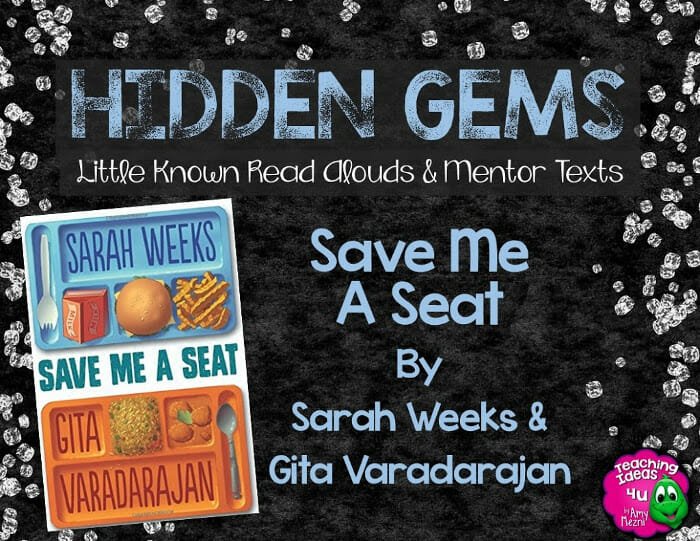Hidden Gems: Save Me A Seat
If you liked Fish in a Tree or Wonder, run and get a copy of Save Me A Seat by Sarah Weeks and Gita Varadarajan. Save Me A Seat integrates cultural informational with themes of acceptance and friendship. The story will resonate with both popular students and those who are on the fringe. Honestly, this book has so many excellent qualities, both students and teachers will love it!
A Summary of Save Me a Seat
Ravi has recently moved to New Jersey from India. His dad was transferred there, and his grandparents moved with his family. A popular student back home, Ravi is eager to start fifth grade and impress both his teacher and other students. Imagine his disappointment when not only does his teacher mispronounce his name, but she also assumes English is not his first language - and recommends he go with the support teacher. Another Indian student, Dillon, is in his class. Although Ravi can tell Dillon is an "American-born Confused Desi," as his grandfather would say, he decides they will be best friends.Joe is a nice guy who is awfully big for his age - and constantly hungry. He is growing so fast that he never fills up! Joe has an auditory processing problem and noise easily overwhelms him - making him an easy target for the class bullies. Joe is super nice, but doesn't really have a true friend. He is just trying to stay off the bully's radar. Imagine how embarrassed he is when his mother takes a job in the school's cafeteria - and blows him a kiss.As their names are in order alphabetically, Ravi and Joe sit next to each other. Joe thinks Ravi seems nice, but Ravi assumes Joe has been picking on him in class - in part because he doesn't see very well, but also because the bullies make it seem like Joe is the culprit. When Ravi is sent with Joe to the pull-out teacher, Joe realizes that their chance of becoming friends is zero.By the end of the first week of school, a lot of changed. The reader learns a lot about Joe and Ravi, and the boys discover that sometimes first impressions are wrong.
Teaching with Save Me A Seat: Character, Point of View, & Theme
The title really grabbed my attention, but I wasn't sure about Save Me A Seat until I read a few chapters - then I was hooked. Although Ravi can sometimes come off as a bit snotty, there are times his vulnerabilities show through and the reader can see his character is a lot more complicated then what he shows on the surface. In the beginning, I found myself really wanting them to be friends, then I was mad at how Ravi so easily dismissed Joe. In the space of one week a lot of things will change - for both boys.The authors have organized the book in five sections - one for each day of the week - so students can track the plot day by day. Within these sections, the chapters switch points of view - some are told by Ravi, while others are told by Joe. It is interesting to compare classroom events from the eyes of different students. Teachers could easily have students compare how the point of view affects the way an event is explained. Students could also be organized in groups and asked to track events as told by either Ravi or Joe. These events could be hung up in a multilayered timeline and compared.The themes in Save Me A Seat will really resonate with students and generate great class discussions. Every student will be able to relate to one of the characters. I believe a lot of students feel misunderstood, and it is clear that both characters are by the people around them - and not just people at school. A real turning point is when Ravi realizes that he is the "dumb" kid at his new school - and he was being treated the same way he treated that kid in his old school. That is really an a-ha moment in the book. Students and teachers will be able to discuss and support many themes in this story, including friendship, don't judge a book by its cover/don't assume things, and treat others as you want to be treated.
I really like that the authors sprinkled Indian culture into the story without making it seem like the book was about culture. Teachers will also find a glossary of both the Indian terms and the American terms used in the book.This book does an excellent job of showing bullying in school. I would be surprised if some of these things aren't happening in most schools around the country! Students will really relate to these characters and the setting. What I especially liked was that the story was appropriate for a lower age range than some of the other books that deal with bullying. I also appreciated that Joe had auditory processing issues. So many students have invisible issues that I believe it is important to introduce students to characters with these problems. This book could easily be read with third, fourth, and fifth graders.What book with anti-bullying themes do you read with students?


